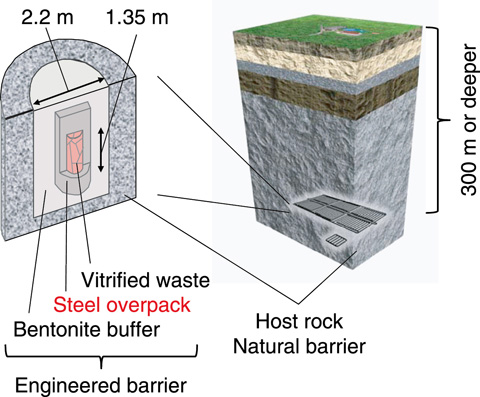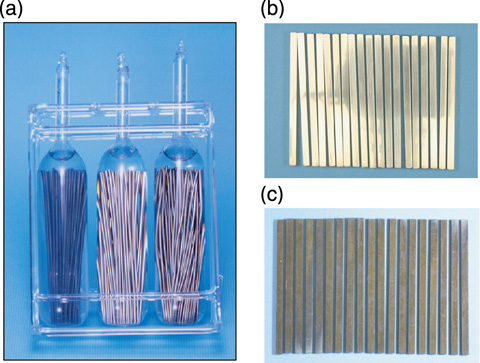
Fig.6-9 Steel overpack for high-level radioactive waste in a geological disposal system

Fig.6-10 Iron specimens sealed in glass ampules and their surfaces before and after corrosion
In a deep geological repository for high-level radioactive waste, as shown in Fig.6-9, the steel overpack will retard the contact of the vitrified waste with groundwater for a certain period but will be continuously corroded and thus will affect the chemical environment in the bentonite buffer.
Corrosion reactions of iron under anoxic deep underground conditions are written as follows:
Fe + 2H2O → Fe(OH)2 + 2H+ + 2e- (Eq.1)
and
3Fe + 4H2O → Fe3O4 + 8H+ + 8e- (Eq.2)
These reactions are oxidization reactions for iron, which should be accompanied by some reducing reactions. Sulfate and hydrogen carbonate anions are naturally occurring candidates as reductants. The reduction of hydrogen carbonate anions yields methane, as shown in Eq. 3, and keeps the groundwater redox potential near -350 mV versus a normal hydrogen electrode.
HCO3- + 9H+ + 8e- → CH4 + 3H2O (Eq.3)
The reduction of sulfate anions keeps the redox potential near -300 mV with a similar reaction.
Understanding the extent of the redox potential of the groundwater is essential, because high-level radioactive waste contains elements such as Np and Se, whose mobility deep underground is sensitive to the redox potential. Knowing whether the hydrogen carbonate anions are reduced to methane is also important, because elements such as U, Np, Pu, and Am become mobile in the presence of hydrogen carbonate anions.
Therefore, we performed corrosion experiments with iron specimens over 160 days using water containing sulfate and hydrogen carbonate anions at 60 °C in glass ampules without contamination of atmospheric oxygen (Fig.6-10) and analyzed the corrosion products. Sulfate and hydrogen carbonate anions were not reduced; however, the reduction of water, as shown in Eq. 4, was observed.
2H2O + 2e- → H2 + 2OH- (Eq.4)
This reaction occurs at extremely low redox potentials of -500 mV.
The corrosion of iron thus generated a strong reducing environment and kept the hydrogen carbonate anions unchanged in the bentonite buffer. These results revealed an important process that can affect the safety of radioactive waste disposal.
This study was sponsored by The Secretariat of the Nuclear Regulation Authority (former Nuclear and Industrial Safety Agency, the Ministry of Economy, Trade and Industry of Japan).